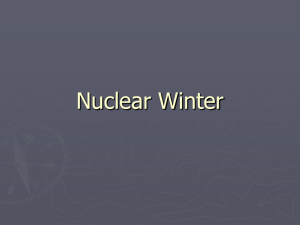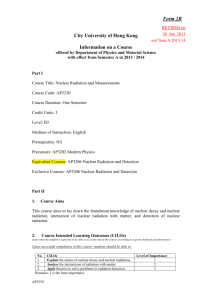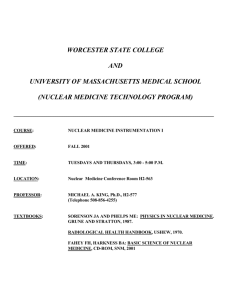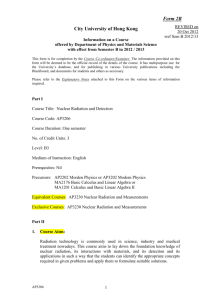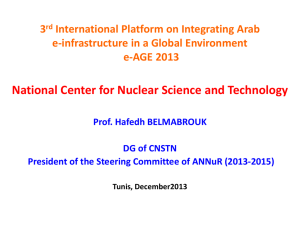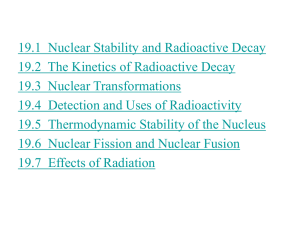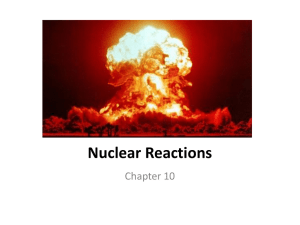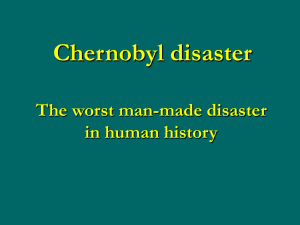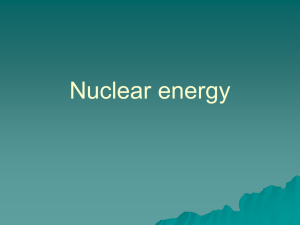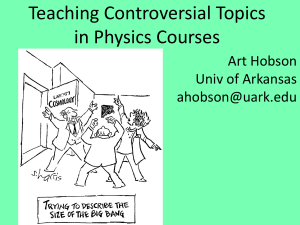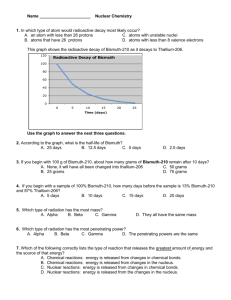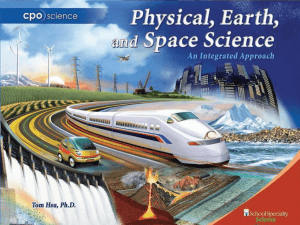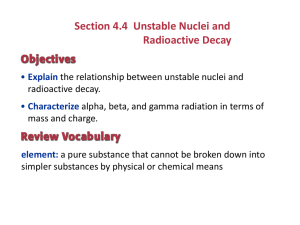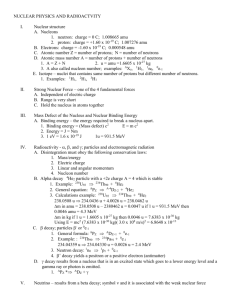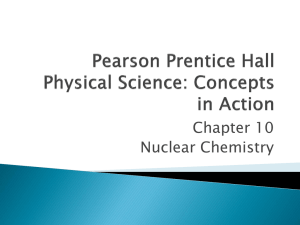Nuclear Winter - Copley
advertisement
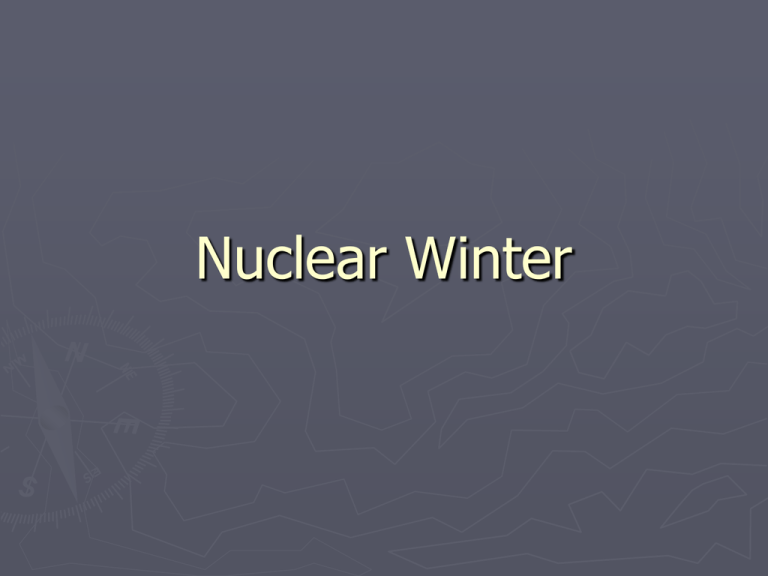
Nuclear Winter Large Scale Nuclear War ► The scariest part of large scale nuclear war is that no one on the planet could possibly escape the after effects. ► Even if you were outside of all blast regions, you would still be exposed to the fallout. ► Fallout is radioactive material spread around from a nuclear explosion. ► In a large scale nuclear war, enough radioactive material would be spread to cover the entire planet. Nuclear Winter ► Even if you were safe from the fallout (somehow), the planet would enter a nuclear winter. ► This is the same idea as a comet hitting the planet and kicking up a huge dust cloud (the theory on what killed the dinosaurs). ► Instead of a comet, it would be several nuclear bombs hitting cities. They burn releasing ash and soot into the stratosphere that would takes decades to settle out. What this would do ► It would block out sunlight from getting to the surface. ► The amount that would be blocked out would depend on the amount of soot in the atmosphere which depends on the number of bombs exploding. ► Even a small exchange of nuclear bombs would have a dramatic effect on the planetary climate. Blocked out Sun ► Some light would still get through, but average temperatures would fall. ► Plants would begin to die. ► Crops would fail. ► Animals that eat those plants begin to die. ► Bodies would begin to pile up, increasing the amount of harmful decomposers. How bad? ► According to a report published in The Journal of Geophysical Research in 2007, a war using most of the world’s arsenal would result in a global cooling of about 7-8o C. ► The last ice age 18,000 years ago was 5o C colder. ► After a decade the planet would still be 4o C, colder. ► A war using 50 Hiroshima sized bombs (the approximate arsenal of India and Pakistan) could cool the planet by 2-3o C for almost 10 years Ozone Depletion ► The soot could chemically react with the ozone layer in the stratosphere. ► This could create “holes” in the ozone layer. ► Not only would you have to deal with lower global average temperatures, but the sunlight that does get through would come with dangerous levels of UV radiation. Likely results ► This would probably result in a mass extinction of most species across the planet. ► Eventually temperatures would return to normal, and new species would come back. ► Given the adaptability and ingenuity of humans, some are likely to survive. ►I Don’t Know With What Weapons World War III Will Be Fought, But World War IV Will be Fought With Sticks and Stones~ “Albert Einstein” Medical Uses of Radioactive Substances Nuclear Medicine ► We use radioactive substances in two different ways for medical purposes. ► Imaging- taking “pictures” of your internal anatomy. ► Therapy- to kill unwanted cells. Imaging ► Your eyes can see a very small range of the electromagnetic spectrum (visible light). ► However, this energy still has an effect on objects. ► Certain materials will absorb the radiation and change colors. ► This occurs through an endothermic reaction “burning” the material. ► These materials are your radiation “film” X Rays ► Wilhem RÖntgen described the properties of X-rays in 1895. ► He called them “X” because they were an unknown. ► Different materials of different densities absorb X-rays differently. ► When X-rays hit a film they darken it. ► Dense materials like bone absorb the X-rays so they stay lighter. CT Scan ►X Rays only give you a 2 D image with all objects superimposed on top of each other. ► A CT (computed tomography) scan has the detector and source move so we can get a computer generated 3-D image of the object. MRI ► Magnetic Resonance Imaging, or Nuclear Magnetic Resonance (NMR). ► When using the same principle on anything but people, it is normally called NMR. ► The term NMR was first, but since the word nuclear was in it, patients didn’t want it. ► This works the same way as a CT scan but uses nonionizing radiation. Radiopharmaceuticals ► Instead of keeping the source outside of the body and sending the radiation through a patient, sometimes radioactive substances are administered internally. ► The patient is then checked radiation. ► This can be used to make an image. Tracers ► Sometimes a radioisotope is bonded to a protein so some substance the body processes. ► After the isotope inside, it allows doctors to see where it is accumulating in the body. ► Radioisotopes chemically bonded is called a tracer. Therapy ► Radiation treatment is often used to treat cancer. ► Chemotherapy works on the same principle, but uses chemicals instead of radioactive substances. ► Cancer cells are rapidly dividing cells. ► These cells should be weaker than other cells since they are dividing so rapidly. Radiation ► Radiation is administered to the affected area. ► Radiation breaks apart and kills all cells. ► Cancer cells should die more easily than healthy cells. ► The idea is to continue the treatment until all the cancer cells are dead, then try to nurse the patient back to health. Common isotopes used in nuclear medicine isotope symbol Z T1/2 F 9 110 m Ga 31 3.26 d ec 36 13.1 s IT β decay Imaging: fluorine-18 gallium-67 krypton-81m rubidium-82 technetium-99m indium-111 iodine-123 xenon-133 thallium-201 18 67 81m 82 Kr + 0.664 (97%) - 37 1.27 m β 3.379 (95%) Tc 43 6.01 h IT - In 49 2.80 d ec - I 53 13.3 h ec - Xe 54 5.24 d β 0.364 (99%) Tl 81 3.04 d ec - 39 2.67 d β 53 8.02 d β Rb 99m 111 + β 123 133 201 - Therapy: yttrium-90 iodine-131 90 Y 131 I Z = atomic number, the number of protons; T1/2 = half-life; decay = mode of decay photons = principle photon energies in kilo-electron volts, keV, (abundance/decay) β = beta maximum energy in mega-electron volts, MeV, (abundance/decay) + + β = β decay; β = β decay; IT = isomeric transition; ec = electron capture * X-rays from progeny, mercury, Hg - 2.280 (100%) 0.807 (100%)
